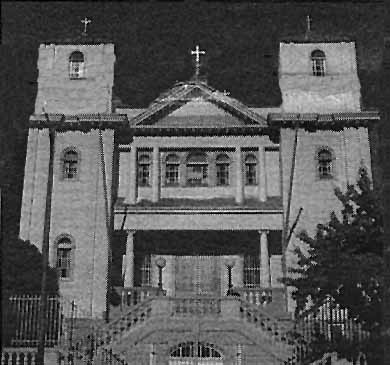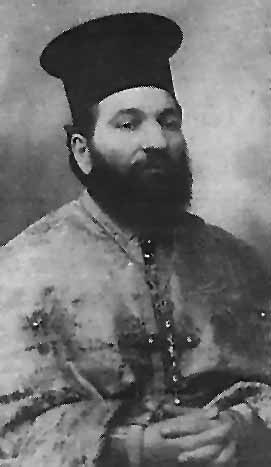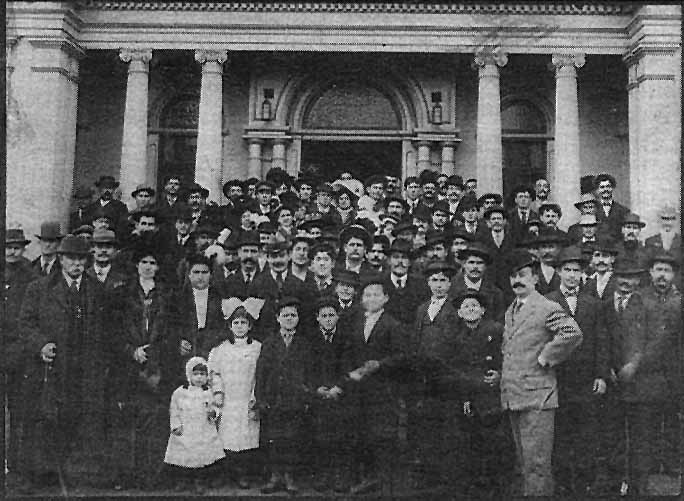 |
|
|
Arising from Catastrophe: A City Remembers |
|
|
By Terry Phillips Hellenic Journel As the Eastern Orthodox world enters Holy Week, one group of Greeks will mark their own modern-day resurrection from a natural disaster. The earth shook. The ground opened. Buildings collapsed. In no time at all, the city lay in ruins. People awoke from their sleep, panic-stricken. Greeks and non-Greeks alike fled for their lives. That city was Sparta, and the year was 464 B.C. This year, San Francisco commemorates a more recent seismological catastrophe. A century ago, Mother Nature brought the City by the Bay to its knees. |
|
|
The devastating earthquake of April 18, 1906 struck shortly after five o'clock in the morning. That temblor, along with its aftershocks, ultimately took an estimated 3,000 lives; injured several hundred thousand people; damaged nearly half a billion dollars in property; and left most the city's population homeless. On this 1OOth anniversary, Greeks are among the many ethnic groups remembering those terrible losses.
|
|
|
His Eminence Metropolitan Gerasimos of San Francisco is to lead a memorial for the Greek Orthodox faithful who perished in the great earthquake and fire. Services begin at 7 p.m. on Thursday, April 6, at the former site of Holy Trinity Greek Onhodox Church,345 Seventh Street in San Francisco. The location now serves as home for St. Michael Ukrainian Orthodox Church. Holy Trinity will also participate as part of the San Francisco Interfaith Council's earthquake centennial observance at noon on Tuesday, April 18. That ceremony is scheduled to take place at Old St. Mary's Roman Catholic Church, 660 California Street. |
 Now St. Michael's Ukrainian Orthodox Church at 345 7th Street in San Francisco |
|
"Without their sacrifices and vision, we would not be here today," adds Father Pappas. "Just as the rest of San Francisco is going to remember, it is important for us to look back - a way to honor our pioneer forebears." The first significant number of Greeks came to San Francisco in the 1880s. Their first organized group was the Hellenic Mutual Benevolent Society, established in 1891. During those early years, Greek parishioners attended the Greek-Russian-Slavonian Eastern Orthodox Church. According to the Rev. Victor Sokolov, "the Orthodox population of the Bay Area was spiritually and sacramentally served by chaplains from Russian Navy ships that frequented San Francisco Bay." That initial church lives on, known today as Holy Trinity Russian Orthodox Cathedral at the cornet of Van Ness Avenue and Green Street. It is the oldest Eastern Orthodox parish in the contiguous United States. By the early 1900s, the number of Greeks grew to approximately 500 and it became clear that they needed their own facilities. One of the community's most active and prosperous members was Alexander Kosta, a sailor from Galaxidion who became a successful restaurateur. In his 1924 memoirs (available online at www.annunciation.org/photoarchive/kostal), Kosta describes how the community raised money for a new church. At a small meeting hall on Sutter Street, he rose to speak: "Greeks, fellow men, friends, and brothers, and Christians. We have only one language, one religion, one flag. Let us try and decide to build a church, because it is a bad thing for us not have a church. I am sure that we shall succeed and I myself first of all put $100.00 down." Then I sat down. Then you should have seen all the Greeks who were present throwing their hats up in the air and saying, 'Ziro Hellas!'" |
|
Holy Trinity Greek Orthodox Church was built on Seventh Street. The first services were held there on December 25,1903 - although the church wasn't officially incorporated until 1904. At that time, it was the only Greek Orthodox sanctuary west of Chicago. Of course, along with having a house of worship, San Francisco Greeks required their own full-time priest. He arrived in the person of the Rev. Constantine Tsapralis. |
 Fr. Constantine Tsapralis prior to 1910 |
| According to church records, Father Tsapralis had a challenging ministry that sometimes took him far from San Francisco. Since there were no other churches or clergy on the West Coast, he had to travel all over California, Nevada and Arizona to perform his pastoral duties - even, on occasion, voyaging
through the countryside by horse and buggy!
Then came the earthquake. Two years after it went up, that first Greek church building crumbled along with the myriad other structures in San Francisco. Kosta relates the community's valiant efforts to recuperate: "Father Tsapralis rescued the baptismal bowl and as many other things as he could from the church and sent them to my house, where, afterward, until a new church was built, we did the services at my house. In a week I had my house full of Greeks, known or otherwise, about sixty people in all. I took the stove out on the street and we cooked for everybody." |
|
|
As with the cataclysm in Sparta two and a half millennia ago, San Francisco's 1906 earthquake led to significant changes. Holy Trinity was rebuilt in 1909. An article published in the Greek-language newspaper, Prometheus, reported that by 1923 the Bay Area Greek population had grown to more than 12,000. Over the decades, the Hellenic community was affected by political upheaval and various other factors. The parish moved from Seventh Street to its current location at 999 Brotherhood Way, where the first Divine Liturgy was celebrated in 1964. Meanwhile, a second Greek Orthodox church (St. Sophia Cathedral) was founded in 1921. That parish eventually became the present Annunciation Cathedral, which, itself, fell victim to an earthquake in 1989. In the wake of these developments, many Greeks living in San Francisco relocated to other parts of the region. That diaspora had the effect of spreading Hellenism and Orthodoxy outside the city's confines and ultimately saw the establishment of Greek communities in San Jose, Oakland, Sacramento and beyond. |
Chronology 1880s First sizeable Greek community in San Francisco |
|
(Posting date 30 May 2006) HCS encourages readers to view other articles and releases in our permanent, extensive archives at the URL http://www.helleniccomserve.com/contents.html. |
|
|
|
|
2000 © Hellenic Communication Service, L.L.C. All Rights Reserved.
http://www.HellenicComServe.com |
|

